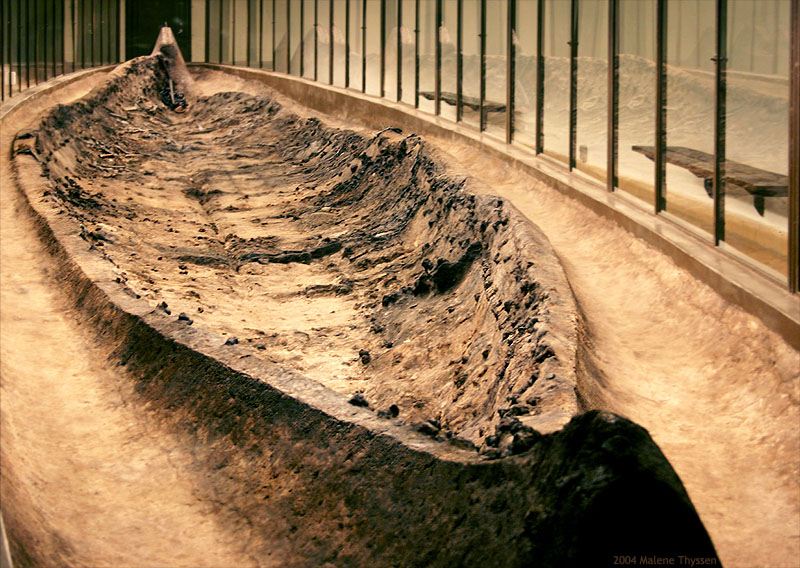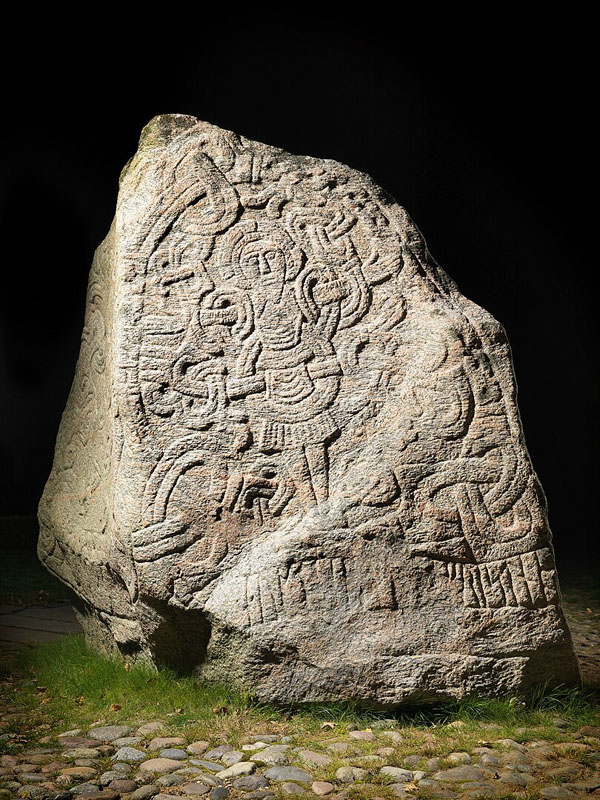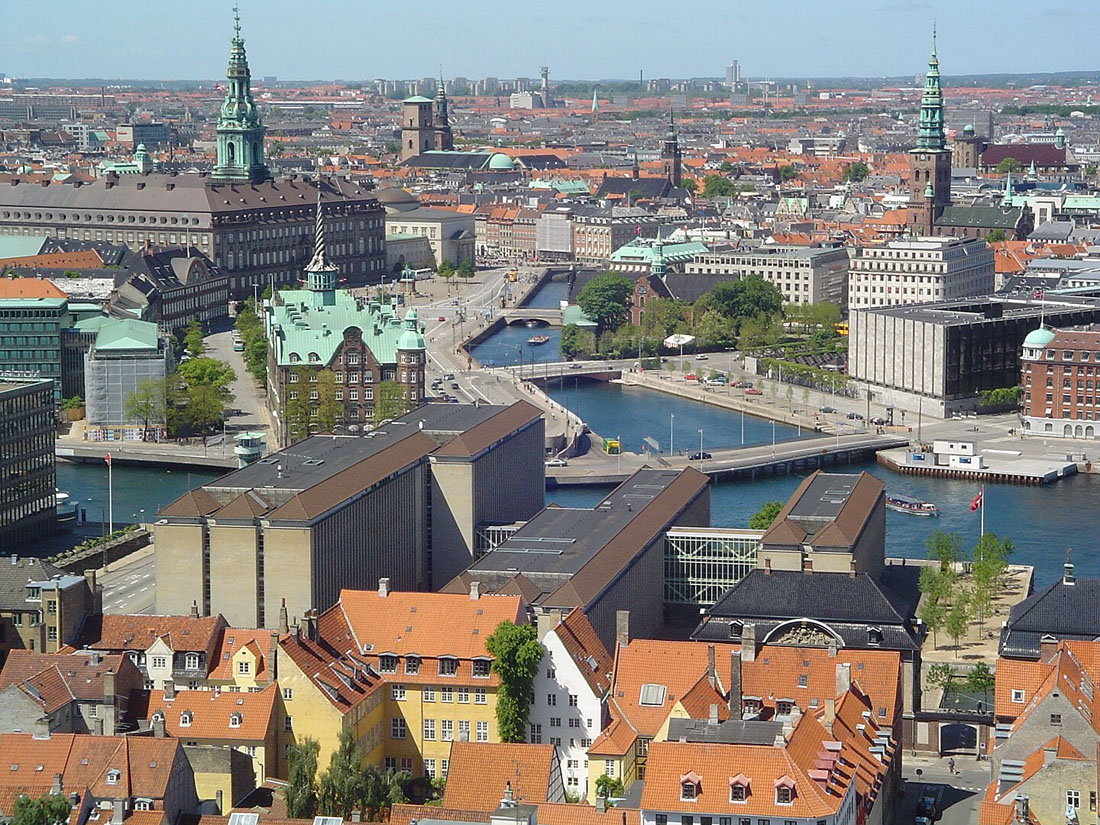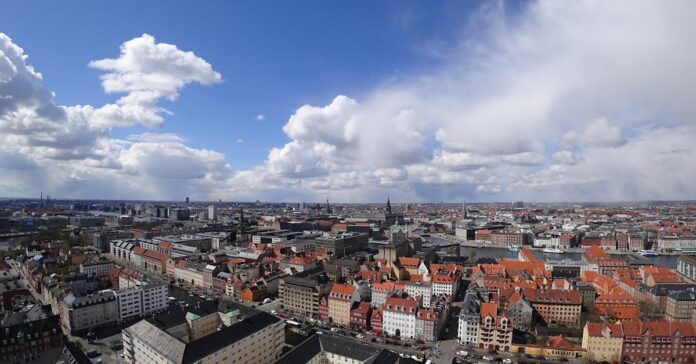Ancient times
The earliest archeological finds in Denmark date back to the Eem inter glacial period from 130,000 to 110,000 BC. Denmark has been occupied since around 12,500 BC and agribusiness has been apparent starting around 3900 BC. The Nordic Bronze Age (1800-600 BC) in Denmark was set apart by entombment hills, which left a wealth of discoveries including lurs and the Sun Chariot.
During the Pre-Roman Iron Age (500 BC – Promotion 1), local gatherings started relocating south, and the principal ancestral Danes came to the country between the Pre-Roman and the Germanic Iron Age, in the Roman Iron Age (Advertisement 1-400). The Roman regions kept up with shipping lanes and relations with local clans in Denmark, and Roman coins have been tracked down in Denmark. Proof areas of strength for of social impact dates from this period in Denmark and a lot of North-West Europe and is in addition to other things reflected in the finding of the Gundestrup cauldron.
Viking and Medieval times
From the eighth to the tenth century the more extensive Scandinavian area was the wellspring of Vikings. They colonized, assaulted, and exchanged all pieces of Europe. The Danish Vikings were most dynamic in the eastern and southern English Isles and Western Europe. They got comfortable aspects of Britain (known as the Danelaw) under Lord Sweyn Forkbeard in 1013, and in France where Danes and Norwegians were permitted to get comfortable what might become Normandy in return of loyalty to Robert I of France with Rollo as first ruler. Some Old English Saxon pence of this period have been tracked down in Denmark.

The ancestral Danes came from the east Danish islands (Zealand) and Scania and talked an early type of North Germanic. Students of history trust that before their appearance, the greater part of Jutland and the closest islands were settled by ancestral Jutes. The Jutes moved to Extraordinary England at last, some as hired soldiers of Brythonic Lord Vortigern, and were allowed the south-eastern regions of Kent, the Isle of Wight and different regions, where they settled. They were subsequently consumed or ethnically scrubbed by the attacking Points and Saxons, who framed the Somewhat English Saxons. The excess Jutish populace in Jutland acclimatized in with the settling Danes.

A short note about the Dani in Getica by the history specialist Jordanes is accepted to be an early notice of the Danes, one of the ethnic gatherings from whom current Danes are plunged. The Danevirke protection structures were underlying stages from the third hundred years forward and the sheer size of the development endeavors in Promotion 737 are credited to the rise of a Danish lord. Another runic letter set was first utilized around a similar time and Ribe, the most established town of Denmark, was established about Promotion 700.
Viking and Medieval times
From the eighth to the tenth century the more extensive Scandinavian locale was the wellspring of Vikings. They colonized, attacked, and exchanged all pieces of Europe. The Danish Vikings were most dynamic in the eastern and southern English Isles and Western Europe. They got comfortable aspects of Britain (known as the Danelaw) under Lord Sweyn Forkbeard in 1013, and in France where Danes and Norwegians were permitted to get comfortable what might become Normandy in return of devotion to Robert I of France with Rollo as first ruler. Some Old English Saxon pence of this period have been tracked down in Denmark
Denmark was to a great extent solidified by the late eighth hundred years and its rulers are reliably alluded to in Frankish sources as lords (reges). Under the reign of Gudfred in 804 the Danish realm might have incorporated every one of the terrains of Jutland, Scania and the Danish islands, barring Bornholm.
The surviving Danish government follows its underlying foundations back to Gorm the Old, who laid out his reign in the mid tenth 100 years. As verified by the Hardening stones, the Danes were Christianised around 965 by Harald Bluetooth, the child of Gorm and Thyra. It is accepted that Denmark became Christian for political reasons so as not to get attacked by the Heavenly Roman Realm. A rising Christian power in Europe, the Sacred Roman Domain was a significant exchanging accomplice for the Danes. As an obstacle against this danger, Harald fabricated six strongholds around Denmark called Trelleborg and constructed a further Danevirke. In the mid eleventh 100 years, Canute the Incomparable won and joined Denmark, Britain, and Norway for very nearly 30 years with a Scandinavian armed force.
All through the High and Late Medieval times, Denmark likewise included Skåneland (the areas of Scania, Halland, and Blekinge in present-day south Sweden) and Danish lords administered Danish Estonia, as well as the duchies of Schleswig and Holstein. The vast majority of the last two currently structure the province of Schleswig-Holstein in northern Germany.
In 1397, Denmark went into an individual association known as the Kalmar Association with Norway and Sweden, joined under Sovereign Margaret I. The three nations were to be treated as equivalents in the association. Nonetheless, even all along, Margaret might not have been so optimistic — regarding Denmark as the unmistakable “senior” accomplice of the association. Consequently, a significant part of the following 125 years of Scandinavian history spins around this association, with Sweden severing and being re-vanquished over and over. The issue was for functional purposes settled on 17 June 1523, as Swedish Ruler Gustav Vasa vanquished the city of Stockholm. The Protestant Reorganization spread to Scandinavia during the 1530s, and following the Count’s Quarrel nationwide conflict, Denmark changed over completely to Lutheranism in 1536. Sometime thereafter, Denmark went into an association with Norway.
Early current history (1536-1849)
After Sweden for all time split away from the individual association, Denmark took a stab at a few events to reassert command over its neighbor. Lord Christian IV went after Sweden in the 1611-1613 Kalmar War yet neglected to achieve his fundamental target of driving it to get back to the association. The conflict prompted no regional changes, however Sweden had to pay a conflict reimbursement of 1 million silver riksdaler to Denmark, a sum known as the Älvsborg emancipate. Ruler Christian utilized this cash to establish a few towns and strongholds, most eminently Glückstadt (established as an opponent to Hamburg) and Christiania. Enlivened by the Dutch East India Organization, he established a comparative Danish organization and wanted to guarantee Ceylon as a settlement, however the organization simply figured out how to obtain Tranquebar on India’s Coromandel Coast. Denmark’s enormous provincial yearnings incorporated a couple of key general stores in Africa and India. While Denmark’s general stores in India were of little note, it assumed a significant part in the exceptionally worthwhile Atlantic slave exchange, through its exchanging stations Stronghold Christiansborg in Osu, Ghana through which 1.5 million slaves were exchanged. While the Danish provincial realm was supported by profession with other significant powers, and ranches – eventually an absence of assets prompted its stagnation.
In the Thirty Years’ Conflict, Christian attempted to turn into the head of the Lutheran states in Germany yet experienced a devastating loss at the Clash of Lutter. The outcome was that the Catholic armed force under Albrecht von Wallenstein had the option to attack, involve, and plunder Jutland, compelling Denmark to pull out from the conflict. Denmark figured out how to keep away from regional concessions, yet Lord GustavusAdolphus’ mediation in Germany was viewed as a sign that the tactical force of Sweden was on the ascent while Denmark’s impact in the locale was declining. Swedish armed forces attacked Jutland in 1643 and guaranteed Scania in 1644. In the 1645 Arrangement of Brømsebro, Denmark gave up Halland, Gotland, the last pieces of Danish Estonia, and a few territories in Norway.
Seeing an amazing chance to destroy the Settlement of Brømsebro, Ruler Frederick III of Denmark, in 1657, pronounced battle on Sweden, the last option being profoundly associated with the Subsequent Northern Conflict (1655-1660), and walked on Bremen-Verden. This prompted a gigantic Danish loss as the armed forces of Ruler Charles X Gustav of Sweden vanquished Jutland and, following the Swedish Walk across the frozen Danish waterways, involved Funen and a lot of Zealand prior to marking the Tranquility of Roskilde in February 1658, which gave Sweden control of Scania, Blekinge, Bohuslän, Trøndelag, and the island of Bornholm. Charles X Gustav rapidly lamented not having demolished Denmark and in August 1658, he sent off a second assault on Denmark, vanquished a large portion of the Danish islands, and started a two-extended attack of Copenhagen. Ruler Frederick III effectively driven the protection of the city, energizing its residents to wage war, and repulsed the Swedish assaults. The attack finished following the demise of Charles X Gustav in 1660. In the resulting harmony settlement, Denmark figured out how to keep up with its autonomy and recover control of Trøndelag and Bornholm. Accomplishing extraordinary ubiquity following the conflict, Frederick III utilized this to disband the elective government for outright government, which went on until 1848 in Denmark.
Denmark attempted yet neglected to recapture control of Scania in the Scanian War (1675-1679). After the Incomparable Northern Conflict (1700-21), Denmark figured out how to recapture control of the pieces of Schleswig and Holstein governed by the place of Holstein-Gottorp in the 1720 Arrangement of Frederiksborg and the 1773 Settlement of TsarskoyeSelo, separately. Denmark succeeded extraordinarily somewhat recently of the eighteenth hundred years because of its impartial status permitting it to exchange with the two sides in the numerous contemporary conflicts. In the Napoleonic Conflicts, Denmark exchanged with both France and the Unified Realm and joined the Class of Equipped Lack of bias with Russia, Sweden, and Prussia. The English looked at this as a threatening demonstration and went after Copenhagen in 1801 and 1807, in one case carting away the Danish armada, in the other, consuming huge pieces of the Danish capital. This prompted the supposed Danish-English Gunboat War. English control of the streams among Denmark and Norway demonstrated shocking to the association’s economy and in 1813 Denmark-Norway failed.
The association was broken up by the Arrangement of Kiel in 1814; the Danish government “irreversibly and for eternity” repudiated cases to the Realm of Norway for the Swedish king. Denmark kept the assets of Iceland (which held the Danish government until 1944), the Faroe Islands and Greenland, which had been all administered by Norway for centuries. Separated from the Nordic states, Denmark kept on administering over Danish India from 1620 to 1869, the Danish Gold Coast (Ghana) from 1658 to 1850, and the Danish West Indies from 1671 to 1917.
Sacred government (1849-present)
An early Danish liberal and public development picked up speed during the 1830s; after the European Upheavals of 1848, Denmark calmly turned into an established government on 5 June 1849. Another constitution laid out a two-chamber parliament. Denmark confronted battle against both Prussia and Austrian Domain in what became known as the Second Schleswig War, enduring from February to October 1864. Denmark was crushed and obliged to surrender Schleswig and Holstein to Prussia. This misfortune came as the most recent in the long series of losses and regional misfortunes that had started in the seventeenth hundred years. After these occasions, Denmark sought after a strategy of lack of bias in Europe.
Industrialization came to Denmark in the final part of the nineteenth century. The country’s most memorable rail routes were built during the 1850s, and further developed correspondences and abroad exchange permitted industry to foster disregarding Denmark’s absence of regular assets. Worker’s organizations created, beginning during the 1870s. There was an extensive movement of individuals from the wide open to the urban communities, and Danish horticulture became focused on the commodity of dairy and meat items.
Denmark kept up with its unbiased position during The Second Great War. After the loss of Germany, the Versailles powers proposed to return the district of Schleswig-Holstein to Denmark. Dreading German irredentism, Denmark wouldn’t think about the arrival of the region without a plebiscite; the two Schleswig Plebiscites occurred on 10 February and 14 Walk 1920, individually. On 10 July 1920, Northern Schleswig was recuperated by Denmark, in this manner adding about 163,600 occupants and 3,984 square kilometers (1,538 sq mi). The country’s most memorable social vote based government got down to business in 1924.
In 1939 Denmark marked a 10-year peace settlement with Nazi Germany yet Germany attacked Denmark on 9 April 1940 and the Danish government immediately gave up. The Second Great War in Denmark was described by financial co-activity with Germany until 1943, when the Danish government declined further co-activity and its naval force abandoned the majority of its boats and sent large numbers of its officials to Sweden, which was impartial. The Danish opposition played out a salvage activity that figured out how to empty a few thousand Jews and their families to somewhere safe in Sweden before the Germans could send them to concentration camps. A few Danes upheld Nazism by joining the Danish Nazi Party or electing to battle with Germany as a feature of the Frikorps Danmark. Iceland disavowed Denmark and turned into a free republic in 1944; Germany gave up in May 1945. In 1948, the Faroe Islands acquired home rule. In 1949, Denmark turned into an establishing individual from NATO.
Denmark was an establishing individual from European Deregulation Affiliation (EFTA). During the 1960s, the EFTA nations were frequently alluded to as the External Seven, rather than the Inward Six of what was then the European Financial People group (EEC). In 1973, alongside England and Ireland, Denmark joined the European Monetary People group (presently the European Association) after a public mandate. The Maastricht Deal, which included further European reconciliation, was dismissed by the Danish nation in 1992; it was just acknowledged following a second mandate in 1993, which accommodated four select outs from strategies. The Danes dismissed the euro as the public money in a mandate in 2000. Greenland acquired home rule in 1979 and was granted self-assurance in 2009. Neither the Faroe Islands nor Greenland are individuals from the European Association, the Faroese having declined enrollment of the EEC in 1973 and Greenland in 1986, in the two cases in light of fisheries arrangements.
Protected change in 1953 prompted a solitary chamber parliament chose by corresponding portrayal, female promotion to the Danish lofty position, and Greenland turning into a necessary piece of Denmark. The middle left Friendly liberals drove a line of alliance states for the vast majority of the final part of the twentieth hundred years, presenting the Nordic government assistance model. The Liberal Party and the Moderate Public’s Party have likewise driven middle right legislatures.
Economy
Denmark has a created blended economy that is classed as a big league salary economy by the World Bank. In 2017, it positioned sixteenth on the planet concerning gross public pay (PPP) per capita and tenth in ostensible GNI per capita. Denmark’s economy stands apart as one of the most free in the Record of Monetary Opportunity and the Financial Opportunity of the World. It is the tenth most cutthroat economy on the planet, and sixth in Europe, as per the World Monetary Discussion in its Worldwide Seriousness Report 2018.
Denmark has the fourth most elevated proportion of tertiary degree holders in the world. The nation positions most elevated on the planet for laborers’ rights. Gross domestic product each hour worked was the thirteenth most noteworthy in 2009. The nation has a market pay imbalance near the OECD average, yet after charges and public money moves the pay disparity is significantly lower. As per Eurostat, Denmark’s Gini coefficient for discretionary cashflow was the seventh least among EU nations in 2017. As per the Global Financial Asset, Denmark has the world’s most elevated least wage. As Denmark has no lowest pay permitted by law regulation, the high compensation floor has been credited to the force of worker’s organizations. For instance, as the consequence of an aggregate bartering understanding between the 3F worker’s guild and the businesses bunch Horesta, laborers at McDonald’s and other cheap food chains make what might be compared to US$20 60 minutes, which is beyond twofold what their partners procure in the US, and approach paid get-away, parental leave and an annuity plan. Association thickness in 2015 was 68%.
When an overwhelmingly horticultural nation because of its arable scene, beginning around 1945 Denmark has enormously extended its modern base and administration area. By 2017 administrations contributed around 75% of Gross domestic product, fabricating around 15% and agribusiness under 2%. Significant businesses incorporate breeze turbines, drugs, clinical hardware, apparatus and transportation gear, food handling, and construction. Around 60% of the all out send out esteem is because of commodity of merchandise, and the leftover 40% is from administration trades, essentially ocean transport. The country’s primary commodity products are: wind turbines, drugs, hardware and instruments, meat and meat items, dairy items, fish, furniture and design. Denmark is a net exporter of food and energy and has for various years had an equilibrium of installments overflow which has changed the country from a net debitor to a net lender country. By 1 July 2018, the net global venture position (or net unfamiliar resources) of Denmark was equivalent to 64.6% of Gross domestic product.
Denmark is important for the European Association’s inner market, which addresses in excess of 508 million customers. A few homegrown business still up in the air by arrangements among European Association (EU) individuals and by EU regulation. Support with the expectation of complimentary exchange is high among the Danish public; in a 2016 survey 57% answered considered globalization to be an open door though 18% saw it as a threat. 70% of exchange streams are inside the European Association. Starting around 2017, Denmark’s biggest product accomplices are Germany, Sweden, the Unified Realm and the Assembled States.
Denmark’s money, the krone (DKK), is fixed at around 7.46 kroner per euro through the ERM II. Albeit a September 2000 mandate dismissed taking on the euro, the nation follows the strategies set out in the Financial and Money related Association of the European Association (EMU) and meets the monetary union standards expected to embrace the euro. Most of the ideological groups in the Folketing support joining the EMU, however beginning around 2010 assessments of public sentiment have reliably shown a reasonable larger part against embracing the euro. In Walk 2018, 29% of respondents from Denmark in anEurobarometer assessment of public sentiment expressed that they were supportive of the EMU and the euro, while 65% were against it. precisely the same post led in November 2023, was practically unaltered with 31% in favor and 63% against.
Positioned by turnover in Denmark, the biggest Danish organizations are: A.P. Møller-Mærsk (global delivery), Novo Nordisk (drugs), ISS A/S (office administrations), Vestas (wind turbines), Arla Food sources (dairy), DSV (transport), Carlsberg Gathering (brew), Salling Gathering (retail), Ørsted A/S (power), Danske Bank.





